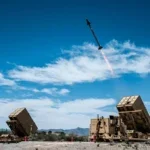
Increasing the speed at which the Defense Department develops and fields emerging technologies is a primary cause for reorganizing the Pentagon’s acquisition structure.Pat Shanahan, the newly installed deputy secretary of defense overseeing the reorganization of the former chief weapon buyer into two new positions, said speed and rapid enhancement of existing systems with emerging technologies is a personal goal.He will be pushing from the top of the acquisition structure for requiring that new weapons and systems be capable of accepting…

 By
By 











